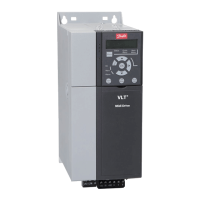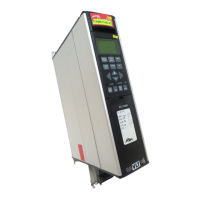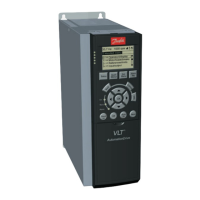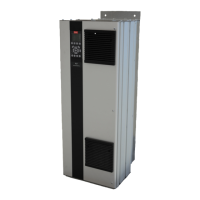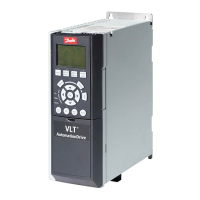Illustration 3.20 The Frequency Converter Successfully Created
in the Hardware Conguration
Illustration 3.21 Tags for the Frequency Converter Created in
the Controller Tags-window.
3.4 IP Trac
The use of Ethernet-based network for industrial
automation purposes calls for careful and thorough
network design. Especially the use of active network
components like switches and routers requires detailed
know-how about the behavior of IP trac.
Some important issues:
Multicast/Unicast
Multicast
trac is addressed to several recipients. Each
host processes the received multicast packet to determine
if it is the target for the packet. If not, the IP package is
discarded. This causes an excessive network load of each
node in the network since they are ooded with multicast
packages. The nature of EtherNet/IP trac is that all
originator-to-target trac is unicast (point-to-point), but
target-to-originator trac is optional multicast. This
enables several listen-only connections to a single host.
The EtherNet/IP control cassette supports both multicast
and unicast trac.
In switched networks, hosts also have the risk of becoming
ooded with multicast trac. A switch usually forwards
trac by MAC address tables built by looking into the
source address eld of all the frames it receives.
A multicast MAC address is never used as a source address
for a packet. Such addresses do not appear in the MAC
address table, and the switch has no method for learning
them, so it forwards all multicast trac to all connected
hosts.
IGMP
IGMP (internet group management protocol) is an
integrated part of IP. It allows hosts to join or leave a
multicast host group. Group membership information is
exchanged between a specic host and the nearest
multicast router.
For EtherNet/IP networks, the switches used must support
IGMP snooping. IGMP snooping enables the switch to
listen in on the IGMP conversation between hosts and
routers. The switch then recognizes which hosts are
members of which groups, thus being able to forward
multicast trac only to the appropriate hosts.
Redundancy
For an Ethernet network to function properly, only 1 active
path can exist between 2 nodes. Spanning-tree protocol is
a link management protocol that provides path
redundancy while preventing undesirable loops in the
network.
When loops occur, some switches see stations appearing
on both sides. This condition confuses the forwarding
algorithm and allows duplicate frames to be forwarded.
Conguration Programming Guide
MG07H102 Danfoss A/S © 06/2016 All rights reserved. 11
3 3
